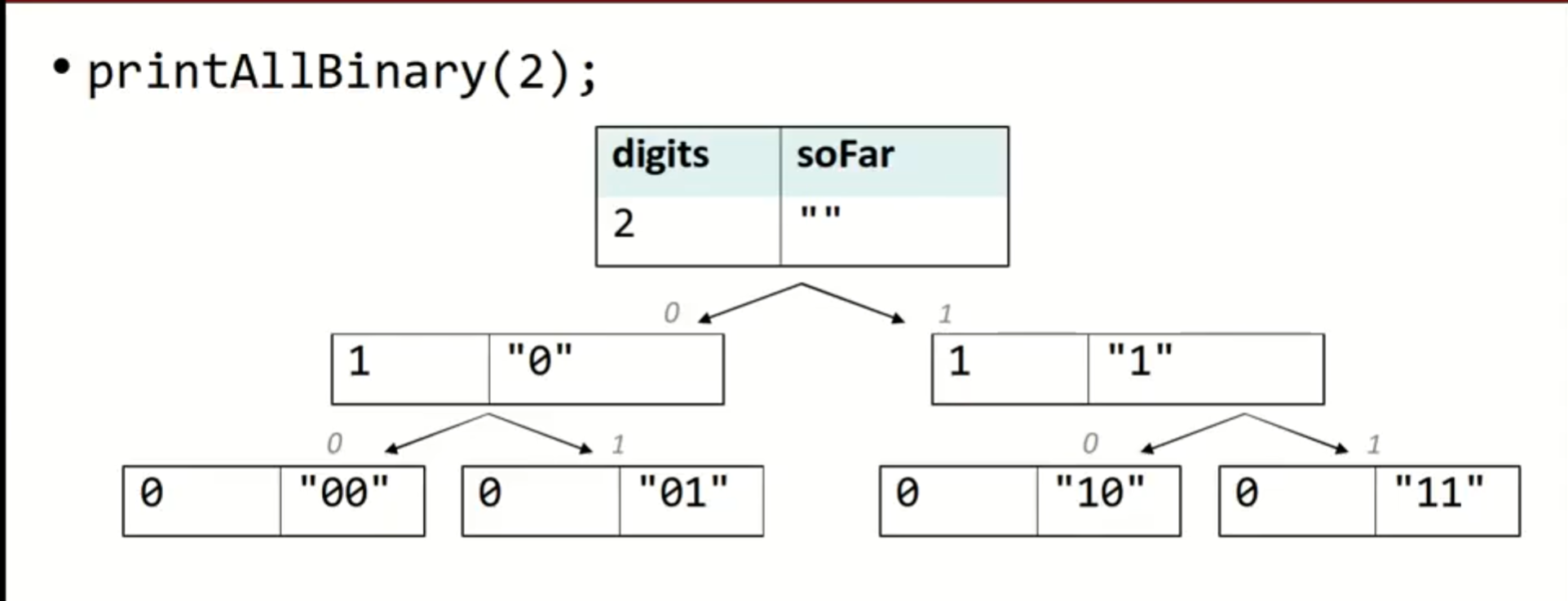Backtracking
Exhaustive Search(穷举搜索)
现在很多方法可以进行穷举搜索,比如枚举、递归、回溯等。
但是对于某些问题,您可以用递归来进行穷举搜索,但是递归的层数太多,会导致栈溢出。
小练习:输出你想要位数的二进制数
这时候我们就会用到“树”的概念。

我们可以用递归来实现这个过程。
c++
void printBinaryHelper(int digits, string output) {
if (digits == 0) {
cout << output << endl;
} else {
printBinaryHelper(digits - 1, output + "0");
printBinaryHelper(digits - 1, output + "1");
}
}
void printBinary(int digits) {
printBinaryHelper(digits, "");
}这个函数的作用是输出从 0 到digits位的二进制数。
我们可以调用printBinary(3)来输出 0 到 3 位的二进制数。
000
001
010
011
100
101
110
111Backtracking(回溯)
回溯是一种算法,它是一种穷举搜索的变体,称为回溯法
通过尝试部分解决方案来寻找解,并在不合适时放弃它们。
- 一种“暴力”算法技术(尝试所有路径)
- 通常采用递归实现
尝试多种可能性,如果进展不如意就回溯
和穷举类似,只是在其中还需要执行一个所谓的"撤销选择"的操作.
小练习:投色子游戏
例如:diceSum(2,7)
{1,6}
{2,5}
{3,4}
{4,3}
{5,2}
{6,1}我们可以用回溯法来实现这个过程。
c++
void diceSumHelper(int dice, int desiredSun, Vector<int>& chosen)
{
if (dice == 0) {
if (destiredSun == 0) {
cout << chosen << endl;
}
}
else {
for (int i = 1; i <= 6; i++) {
chosen.add(i);
diceSumHelper(dice - 1, desiredSun - i,chosen);
chosenremoveBack();
}
}
}这个函数的作用是输出从 1 到 6 的骰子的组合,使得骰子的和等于desiredSun。
我们可以调用diceSumHelper(2,7)来输出 2 个骰子的组合。
{1,6}
{2,5}
{3,4}
{4,3}
{5,2}
{6,1}可是这个算法有什么问题呢?
- 它会产生大量的重复计算,导致效率低下
- 它会产生大量的回溯,导致效率低下
- 它会产生大量的内存消耗,导致效率低下
总而言之效率低下
这就是所谓的暴力求解!
